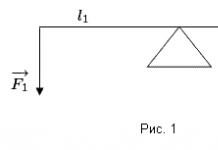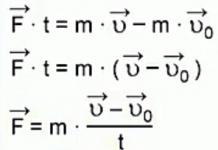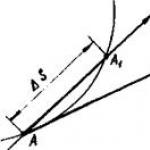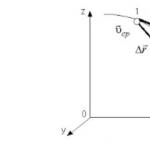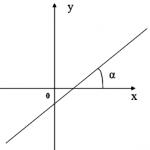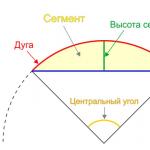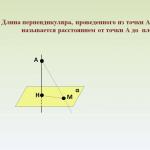"Revolution of 1905 - 1907"
Presentation prepared by: Natalia Malchikova

Relevance of the topic
Today, during the period of reforms of our modern society, events of 1905-1907. show an example of the formation of parliamentarism in Russia.

Target
Analyze the main causes, consequences and events of 1905-1907 that contributed to the development of the country.
Tasks:
- Analyze the historical literature on this issue;
- Identify the main causes of the event;
- Establish a causal relationship between revolutionary events and the development of parliamentarism;
- Show the features of parliamentarism at the beginning of the twentieth century;
- Determine the main results, consequences and significance of the revolution;

Background of the revolution
- The extremely worsened condition of the masses;
- The unwillingness and inability of the tsarist government to resolve pressing issues;
- Catastrophic move Russo-Japanese War.

Reasons for the revolution:
- The inconsistent nature of the reforms.
- The contradictions between the various classes have become extremely acute.
- Working question.
- Police arbitrariness, bribery, abuse of a human person.
- Hatred of tsarism.

Tasks of the revolution:
- overthrow of the autocracy and the establishment
democratic republic;
- elimination of class inequality;
- introduction of freedom of speech, assembly, parties and associations;
- destruction of landlordism
and giving the peasants land;
- reduction of the working day to 8 hours;
- recognition of the right of workers to strike and form trade unions;
- establishing the equality of the peoples of Russia.

Driving Forces and Character of the Revolution
- The implementation of the tasks is of interest to the general population.
- Participated in the revolution: different strata of society. Therefore, it was public.
- In terms of goals and composition of participants, it had a bourgeois-democratic character.

The beginning of the revolution. First revolutionary wave
- On January 3, a strike broke out at the Putilov factory, which was joined by workers from other enterprises.
- On January 9, a 140,000-strong procession of workers with banners led by Gapon was stopped on the outskirts of the Winter Palace.

Second revolutionary wave
- In the spring and summer, the strike movement unfolded with renewed vigor.
- In the spring and summer, peasant uprisings took on a massive character.
- The students continued to fight. The professional-political unions of the intelligentsia, which had previously arisen under the auspices of the Union of Liberation, became more active.
- Movement began in the army and navy.

The Highest Rise of the Revolution (October - December 1905)
- In the autumn of 1905 the center of the revolution moved to Moscow. The All-Russian October political strike that began in Moscow, followed by an armed uprising in December 1905, was the highest upsurge of the revolution.
- General strikes and strikes demanding a solution to the labor issue.
- The growth of the armed and uprisings in the navy.

Fall of the revolution
- Labor movement - went into decline.
- Peasant movement- After concessions from the government and repression, they began to decline.
- Democratic Movement - the struggle did not stop, but took on parliamentary forms.
- Movement in the army- 1906 uprisings in Kronstadt and Sveaborg (July). In 1907 from the performance almost stopped.
- national movement active in various forms.

The formation of the Russian multi-party system
- Revolution of 1905 - 1907 created favorable conditions for the formation of many political parties, both Russian and national.

Activities of the State Dumas of the first and second convocations.
- Electoral law 1905 .
- State Council was turned into the upper house of the Russian parliament.

The policy of autocracy and the third June coup d'état.
- The government continued to practice tough measures.
- The repressions were combined with the concessions torn out by the revolutionary movement in the field of changes in the state system, on peasant and labor issues.
- The revolution is over. The Third June Monarchy emerged.

The results and significance of the revolution of 1905 - 1907.
- The revolution has changed political situation Russia.
- Some limitation of autocracy has been achieved.
- The bourgeoisie received a wide opportunity to participate in the political life of the country.
- Improved financially
The legal status of workers.
- The peasants achieved the abolition of redemption payments.

- Russia at the beginning of the twentieth century.
- 1900 - 1903 - economic crisis
- 1904 - 1905 - Russo-Japanese War
- Unresolved Peasant Question
- Exploitation of workers
- The bourgeoisie had no power and was not in opposition to the autocracy
- Nicholas II
- (1894-1917)
- Peasant unrest
- Russian suppliers of bread to the European market faced competition from other suppliers.
- Farms and landowners and peasants suffered.
- Committees were organized to ascertain the needs of the village.
- In Little Russia began
- peasant unrest.
- They put forward economic demands (increase in wages, medical insurance, labor protection, etc.)
- Political demands were added ("Down with the autocracy!" ...)
- "Zubatovsky socialism"- an attempt by the tsarist government to distract workers from the revolutionary struggle by creating legal workers' organizations under the tutelage of the police department (1901-1903) on the initiative of the head of the Moscow security department S. V. Zubatov
- Zubatov S.V.
- from wealthy peasants
- priest, security agent
- initiator of the creation of a pro-government workers' organization "Assembly of Russian Factory Workers of St. Petersburg in 1903-04
- on his initiative, a petition was developed and a procession of workers to the tsar was organized on January 9, 1905, which ended with the execution of workers
- emigration
- return to Russia in autumn 1905
- March 28, 1906, after being exposed, in Ozerki (near St. Petersburg) we are tried by a group of workers and hanged
- Measures against the poverty of the people:
- The transfer of land to the people and the abolition of redemption payments;
- Cancellation of indirect taxes, replacement with income taxes;
- The end of the war by the will of the people.
- Measures against the lawlessness of the Russian people:
- Return of victims for political and religious beliefs;
- Granting the rights and freedoms of the individual;
- Universal Compulsory public education;
- Equality before the law.
- Measures against the oppression of capital over labor:
- Abolition of the institution of factory inspectors;
- Establishment of permanent commissions of elected workers;
- Eight-hour work day and normal wages.
- January 9, 1905 - the execution of a peaceful demonstration of workers. Mass riots in St. Petersburg. Following them, the workers of Moscow, Riga and a number of other cities of Ukraine, Transcaucasia declared strikes.
- spring 1905 - a wave of May Day strikes (600 thousand people). The largest was the strike in Ivanovo-Voznesensk (72 days), during which the Council of Workers' Deputies was elected, which became the body of power in the city
- summer 1905 - the army and navy are engulfed in a revolutionary movement. On June 14, 1905, the sailors on the battleship "Prince Potemkin Tauride" rebelled
- October 1905 - general October political strike (2 million people). Peasant unrest covers 1/3 of the counties of Russia. Nicholas II issues a decree on the termination of the collection of redemption payments for land.
- October 17, 1905 - Emperor signed the Manifesto
- December 10-19, 1905 - armed uprising in Moscow (6 thousand people)
- Introduction of universal suffrage
- Granting democratic freedoms to the people - speech, assembly, press, conscience
- Creation of the State Duma, endowed with legislative powers
- socialist
- liberal
- monarchical
- Features of the Russian multi-party system
- A significant number of parties
- Method of formation (not "from below", but the initiative of the intelligentsia)
- Socialist parties formed first
- I State Duma April 28-July 8, 1906
- Composition: liberal parties 43%;
- Trudoviks and Social Democrats 23%;
- nationalists 14%;
- The Bolsheviks boycotted
- the Black Hundreds did not pass.
- The main issues are agrarian, the program of democratization of Russia. Disbanded as "sowing confusion."
- II State Duma February 20 - June 3, 1907
- Composition: "Liberal Bloc" (Socialist-Revolutionaries, Trudoviks and Social Democrats) -43%;
- Cadets - 19%;
- Black Hundreds - 10%
- Nationalists and Octobrists - 15%
- Main issues: agrarian, taxation, political freedoms. Disbanded, under the pretext of preparing a coup d'état
- July 1906 - Chairman of the Council of Ministers A.P. Stolypin
- February 20 - June 3, 1907 - the second State Duma
- Decreased actions of workers and peasants
- Third June Monarchy
- In 1906 - 1907. only isolated outbreaks of workers', peasants' and soldiers' uprisings were observed, but they were very quickly suppressed.
- First Russian Revolution 1905-1907 was defeated.
- Nicholas II dissolved the State Duma and unilaterally changed the electoral law,
- which was a violation of the manifesto of October 17, 1905.
- Content:
- Two majorities formed in the Duma: autocratic and liberal.
- The union of the autocracy and the bourgeoisie was not equal.
- The king led a policy of maneuvering between the interests of the estates
- Restriction of the rights of the Duma: violation of the legislative initiative, prohibition of the development of bills.
- Changes in the electoral law:
- 1 vote of the landowner = 4 votes of the big bourgeoisie = 65 votes of the petty bourgeoisie = 260 votes of the peasants = 543 votes of the workers
- The rights of non-Russian peoples are sharply limited.
- Results of the first Russian revolution
- 1905-1907
- The main result of the revolution is revolutionary changes in the minds of the people. The revolution dealt a blow to the autocracy, elements of democracy appeared in the country - the State Duma, a multi-party system, recognition of individual rights, but without guarantees of their observance.
- Redemption payments were canceled in the village, land rent was reduced. But the agrarian question was not resolved: the landed estates remained.
- Workers were given the right to form trade unions and strikes were allowed. The working day has been reduced to 9 hours, wages have been raised.
- The Russification policy of the autocracy was significantly limited: teaching in national languages was introduced in schools. The national outskirts received representation in the Duma.
- But the basic contradictions of Russian reality were not resolved: autocracy, landownership, national contradictions remained, modern labor legislation was not introduced.
To use the preview of presentations, create a Google account (account) and sign in: https://accounts.google.com
Slides captions:
First Russian Revolution 1905-1907
1. Did Russia need this war, despite the fact that Japan started the war? What goals did the tsarist government pursue in this war? 2. What are the consequences of the Russo-Japanese War? 3. How could it happen that little Japan got the better of mighty Russia? Repetition. Russo-Japanese War
Revolution of 1905-1907 - BOURGEOIS-DEMOCRATIC Objectives: Elimination of autocracy, landlordism Democratization political system countries
Participants Autocracy Liberals Revolutionaries Emperor government Intelligentsia bourgeoisie Socialist-Revolutionaries RSDLP Workers and peasants
1. January 9, 1905 - "Bloody Sunday" became the starting point of the revolution. 2. October - December 1905 - active actions, the highest rise of the revolution. 3. January 1906 - June 3, 1907 - decline. Stages of the revolution
Georgy Apollonovich Gapon - priest, leader of the labor movement
The driving force of the revolution Workers Peasants Petty bourgeoisie Intelligentsia Separate parts of the army
Measures against the poverty of the people: Transfer of land to the people and the abolition of redemption payments; Cancellation of indirect taxes, replacement with income taxes; The end of the war by the will of the people. Measures against the lack of rights of the Russian people: Return of victims for political and religious beliefs; Granting the rights and freedoms of the individual; Universal compulsory public education; Equality before the law. Measures against the oppression of capital over labor: Abolition of the institution of factory inspectors; Establishment of permanent commissions of elected workers; Eight-hour work day and normal wages. Workers petition
Position of power
June 1905 Uprising on the battleship Potemkin
1. “... To grant the population the unshakable foundations of civil freedom on the basis of real inviolability of the person, freedom of conscience, speech, assembly and unions. 2 ... to attract ... to participate in the Duma ... those classes of the population that are now completely deprived of voting rights ... 3. To establish as an unshakable rule that no law could take effect without the approval of the State Duma ... "From the manifesto on October 17
The results of the revolution Limitation of the power of the emperor Creation of the Russian parliament - the State Duma Cancellation of redemption payments The right to create trade unions, the working day - 9 hours Autocracy, landownership remained, peasant and national issues have not been resolved
Homework Short essay Do you agree with the statement that the revolution of 1905 - 1907. been defeated? Justify your answer.
summary of other presentations
"Modernization of Russia at the beginning of the 20th century" - The program of modernization of the country. Edmond Teri. Share of foreign capital. Alexis de Tocqueville. Russia continued to be an autocratic monarchy. "Freeze" of cash accounts. Economic development program. Compare modernization in Russia and Western countries. Modernization of Russia. Industrialization. Agricultural products. The constitution appeared in Japan. Time to enter the path of the capitalist. development. N.Kh. Bunge.
"Russian Revolution 1905-1907" - Revolution. Legislative representative body. The first Russian revolution. The nature of the revolution. December armed uprising in Moscow. Congress of the RSDLP. Causes of the Revolution. Revolution lines. Economic crisis. General rehearsal in 1917. Bloody Sunday. Main events. The first concessions to autocracy. Peasant Union. Manifesto on the creation of a legislative council. Uprising on the battleship Potemkin.
"Russia enters the 20th century" - Date of the Battle of Borodino. Russia is entering the 20th century. Bolsheviks. Date of the Battle of Kulikovo. Revolution. When finished typing. fate royal family. First World War. The war went on with varying success. Civil War. In what year did Russia become an empire? The most terrible of wars is civil. Saint Petersburg. In what year Lomonosov was sent to study in St. Petersburg. Additional questions. Answer questions.
"The first revolution in Russia" - The first Russian revolution. Revolution of 1905-1907 in Russia. results of the revolution. demands for political freedom. Portraits of the king. Consequences of the Russo-Japanese War. Lead students to understand the causes, nature, consequences of the first Russian revolution. Manifesto October 17th. Alternative ways of development of Russia. Bloody Sunday. Form of government. Columns of workers. Workers. The course of the revolution.
"Events of the Russo-Japanese War" - Reassessment of opportunities. Fall of Port Arthur. The split of the world. Russia recognized Korea as a sphere of Japanese interests. The split of Europe. The main directions of foreign policy. The commandant of the fortress was killed. The main directions of Russian foreign policy at the beginning of the 20th century. Royal Palace in The Hague. Foreign policy. Main directions. Far East policy. A.M. Bezobrazov. The death of the Varyag. Rapprochement between Russia and England.
"Development of Russia in 1894-1904" - Zubatovsky socialism. P.D. Svyatopolk-Mirsky. Creation of the RSDLP. Creation of the RPS. Ideas of Marxism. Marxism. Creation of the RSDLP. P.D. Svyatopolk-Mirsky and his projects. Bolsheviks. Publisher of the magazine "Liberation". police socialism. liberal movement. Fight tactics. The tragedy of the personality of Nicholas. Personal qualities. The struggle between liberals and conservatives. Yu.O.Martov. National Policy. Zubatovshchina. Conservatives and liberals.
REVOLUTION 1905 - 1907: the causes of the revolution Unresolved agrarian issue:
preservation of landownership,
lack of land and poverty of the peasants
The plight of industrial
workers: low wages, long
working day (on average - 12 hours),
lack of social security.
Political inconsistency
autocratic monarchy systems
socio-economic relations
industrial society: no
representative authorities, legal
political parties and democratic
freedom
National oppression and Russification.
REVOLUTION 1905 - 1907: periodization and character
PERIOD 1: the beginning of the revolution (January - February1905)
2 PERIOD: the development of the revolution in ascending
lines (March - August 1905)
3 PERIOD: the highest rise of the revolution (October-December 1905)
4. PERIOD: downward development of the revolution
lines (1906 - June 3, 1907)
CHARACTER OF THE REVOLUTION:
By tasks: bourgeois
By driving forces: bourgeois-democratic
Bloody Sunday January 9
1905 in St. Petersburg.
The workers carried a petition to the tsar with
economic, political and
social requirements.
The speech had a social
character, it took part
140 thousand people. January 9th was
96 people were killed and 333 wounded.
REVOLUTION 1905 - 1907: the beginning of the revolution
Workers' strikes in solidarity with St. Petersburgthe proletariat marched all over the country: in Moscow, Riga, Lodz,
Warsaw, Tiflis. In total, more than
800 thousand people. At the end of January, the all-Russian
student, political strike.
In February 1905, Ivan Kalyaev killed the former Moscow
Governor Grand Duke Sergei Alexandrovich.
GOVERNMENT RESPONSE:
January 18, 1905 - the resignation of the Minister of the Interior P.D.
Svyatopolk-Mirsky and the appointment of A.G. Bulygin.
in February 1905, the emperor's rescript on the intention to attract
elected representatives to the legislative process.
Increasing the political activity of the masses, involvement in
movement of layers previously distant from politics, unification
broad circles of the intelligentsia and the liberal bourgeoisie. IN
In April 1905, the III Congress of the RSDLP was held and the Geneva
conference of the Mensheviks.
Strike movement: May 1, 1905 nationwide
there were demonstrations and strikes of workers. The strikes resulted in
armed clashes.
Creation of Soviets: On May 12, a citywide strike of 70,000 textile workers from Ivanovo-Voznesensk and its
surroundings, which led to the creation of the first in Russia
City Council of Workers' Deputies.
Movement in the army and navy: June 14 - 25, 1905 uprising
on the battleship "Prince Potemkin-Tavrichesky". June 15-18 uprising of the Baltic naval crews in Libau. All rebellions
depressed.
REVOLUTION 1905 - 1907: development along the ascending line
REVOLUTION 1905 - 1907: development along the ascending line
Peasant movement: pogroms of landowners' estates;the formation of "peasant republics" (Markov Republic
October 31, 1905 - July 18, 1906: the villagers chose at the gathering
"President of the Republic" peasant P. A. Burshin and took on
self control inner life sat down).
National Movement: protests against the authorities in
Poland, Latvia, Georgia: refusal to pay taxes, speeches
against landlords.
Political terrorism of the Fighting Organization of the Socialist-Revolutionaries
GOVERNMENT RESPONSE:
The project of the "Bulygin Duma": August 6, 1905 - acts of
"Establishment of the State Duma" and "Regulations on elections
to the Duma. The State Duma was planned as
advisory representative body elected for 5 years
on the basis of qualification and estate suffrage.
All-Russian October political strike:
Railroad strike in Moscow on October 7th. October 10 -
citywide strike. Since October 12, the strike movement has embraced
and Petersburg. By mid-October, the political strike had engulfed the entire
country. Stopped with the adoption of the Manifesto on 17 October.
About 2 million people participated.
The uprising of sailors under the command of Lieutenant P.P.
Schmidt November 11–15, 1905. It began on the cruiser Ochakov.
12 vessels of the Black Sea Fleet joined it, incl. "Saint Panteleimon"
(former "Potemkin-Tavrichesky"). Schmidt and other leaders
the uprisings were put on trial and executed.
December armed uprising in Moscow: general
workers' strike turned into an uprising. Construction and defense
barricade. In total, up to 8 thousand people participated in the uprising.
Lasted from 8 to 19 December. With regular parts
resistance was crushed. The last stronghold of the rebels -
REVOLUTION 1905 - 1907: the highest rise of the revolution
REVOLUTION 1905 - 1907: the highest rise of the revolution
GOVERNMENT RESPONSE:Manifesto October 17, 1905 "On
improvement of the state
order": the gift of common
civil liberties
(inviolability of the person,
freedom of conscience, speech, assembly and
unions), it was said about the expansion
suffrage in elections
the State Duma, which received
the right to approve laws.
On October 19, 1905, a manifesto was issued on
creation of a governmental
body headed by the chairman
Council of Ministers. He was
appointed Count S. Yu. Witte
REVOLUTION 1905 - 1907: formation of political parties
Monarchists: Union of the Russian People, Russian People's Unionnamed after Michael the Archangel. PROGRAM: recovery
autocracy, nationalism, anti-Semitism.
Cadets: (KDP) - On October 12-18, 1905, the First Congress was held in Moscow.
AGENDA: Fight for Civil Liberties, Introduction
constitution and parliament, restoration of the state
autonomy of Finland and Poland, alienation of up to 60% of landowners
land, the introduction of an 8-hour day, social insurance.
Octobrists: (Union of October 17). PROGRAM:
constitutional monarchy with the preservation of strong power
autocrat, cultural autonomy.
The split among the Socialist-Revolutionaries into the Labor People's Socialist
party (People's Socialists, or Popular Socialists, rejected terror) and
"Union of Socialist-Revolutionary Maximalists" (between terror).
April 10-25, 1906 - IV (unifying) Congress of the RSDLP (in
conditions of the revolution - the union of the Mensheviks and the Bolsheviks.
REVOLUTION 1905 - 1907: downward development
23April
1906
were
approved
Main
laws
V
Russian
empire.
Form
board
–
dualistic monarchy with
strong
imperial
power and organs
legislative
authorities:
State Duma and
State Council.
Laws without council approval
could
be published
V
emergency
okay
between sessions.
REVOLUTION 1905 - 1907: First State Duma
The first meeting of the State Duma took place on April 271906 in the Tauride Palace. Chairman Cadet Professor S.A. Muromtsev. The composition of the Duma was dominated by
Cadets, Trudoviks and non-Party people. Socialist-Revolutionaries and Social-Democrats announced
boycott. Worked for 72 days. The main issue is agricultural.
from the Cadets "Project 42": the creation of a state
land fund to allocate land to the peasantry with
the inclusion of state, monastic and part of the landowners' lands.
They advocated the preservation of exemplary landlord farms.
from the Trudoviks "project 104": allotment of land according to labor
norm at the expense of state, monastic and privately owned
lands exceeding the labor norm, the introduction of equalization of labor land use.
from the Social Revolutionaries "project 33": the destruction of private property
on land and declaring it the property of the population of Russia.
On July 8, 1906, the First Duma was dissolved.
REVOLUTION 1905 - 1907: II State Duma
In terms of party composition, it turned out to be “to the left” of the previous one.The majority were Cadets, Trudoviks, Social Democrats and
SRs.
The II State Duma lasted only 102 days.
The Duma, from the very beginning of its work, occupied the opposition
position: insisted on the responsibility of the government to
deputies, demanded to change internal politics, in
including the death penalty. Not recognizing rigid
Stolypin's policy towards the radicals, the Duma rejected
a number of Stolypin's reforms, including agrarian, including -
CANCELLATION OF REPURCHASE PAYMENTS.
P. A. Stolypin headed for its dissolution. June 3, 1907 II
The State Duma was dissolved.
REVOLUTION 1905 - 1907: results and significance
Replacement of autocracydualistic monarchy with
representative body
legislature
Granted democratic rights:
personal privacy,
freedom of conscience, speech, assembly
political parties
Policy liberalization in
Finland
Redemption payments canceled
Not resolved:
agrarian question
question of responsibility
government to the people

